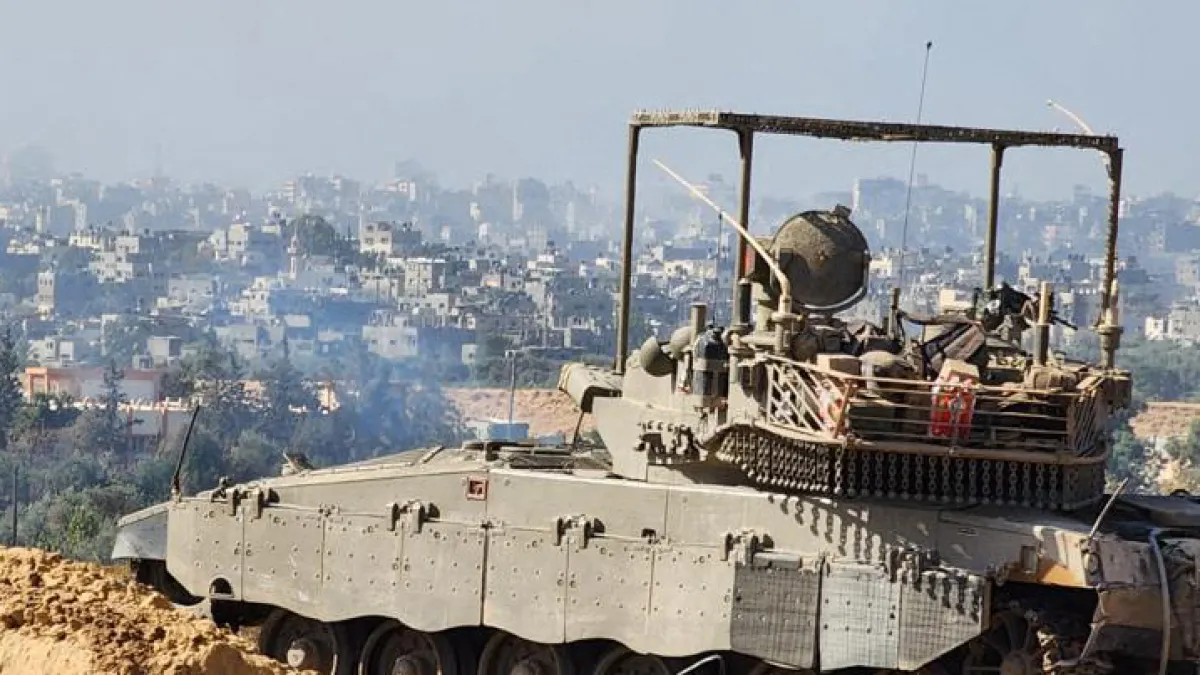
Israeli tanks pushed overnight into the Ebad-Alrahman area on Gaza City’s northern edge, shelling homes and sending residents fleeing, witnesses said, ahead of a White House meeting on the war that U.S. President Donald Trump is due to chair on Wednesday.
Residents said armor entered late Tuesday, wounding several people and prompting civilians to move deeper into the city. “All of a sudden, we heard tanks… explosions got louder and we saw people escaping,” said Saad Abed, 60, speaking by chat app from Jala Street about 1 km from the neighborhood.
Israel says it is preparing a new offensive in Gaza City, which it describes as Hamas’s last stronghold. Around half of the enclave’s two million people are currently there and Israel says they will be told to evacuate. Church leaders in the city said they would not leave, calling departure “a death sentence,” and vowed to keep caring for those sheltering in church compounds.
Israeli military Arabic spokesperson Avichay Adraee said evacuation of Gaza City was “inevitable” and that Israel had begun facilitating the entry of tents. He said empty areas existed in the southern Strip, central camps and Al-Mawasi to accommodate people. Palestinian and U.N. officials say the enclave needs roughly 1.5 million additional tents.
U.S. special envoy Steve Witkoff said Trump would chair a Gaza meeting at the White House on Wednesday and that Washington expects the conflict to be settled by year-end. The State Department said Secretary of State Marco Rubio would meet Israeli Foreign Minister Gideon Saar in Washington; it was not clear who would attend the Trump meeting.
Later on Wednesday, residents said tanks pulled back from Gaza City’s edge toward Jabalia, where Israeli forces have operated for months, as bombardments continued in Shejaia, Zeitoun and Sabra. Gaza health authorities said at least 20 people were killed across the enclave, including a four-year-old girl. The Israeli military said its forces were operating in Jabalia and on Gaza City’s outskirts to dismantle militant infrastructure and had killed Mahmoud al-Aswad, described as Hamas’s West Gaza general security chief, on Aug. 22; Hamas has not confirmed his death.
In Israel, protests against the war grew, with thousands calling for an end to the fighting and the release of hostages still held in Gaza. Israel has not publicly responded to the latest U.S.-backed 60-day ceasefire proposal it previously accepted and which Hamas agreed to last week.
The war erupted on Oct. 7, 2023, when Hamas-led fighters killed 1,200 people and seized 251 hostages in Israel, according to Israeli figures. Israel’s campaign in Gaza has killed more than 62,000 Palestinians, Gaza health authorities say, displacing nearly the entire population and devastating infrastructure. On Wednesday, the Gaza health ministry said 10 more people died of malnutrition and starvation, bringing such deaths to 313, including 119 children, since the war began. Israel disputes figures from the Hamas-run ministry.
